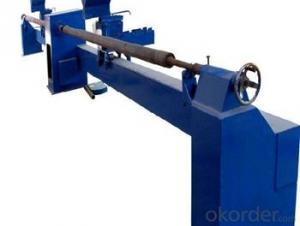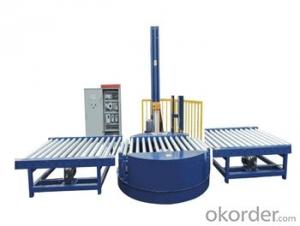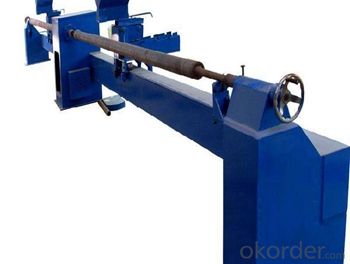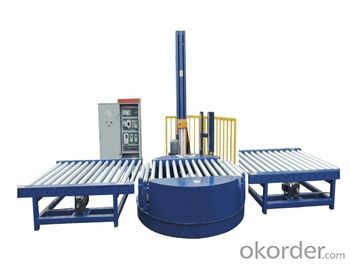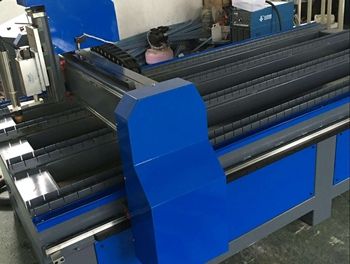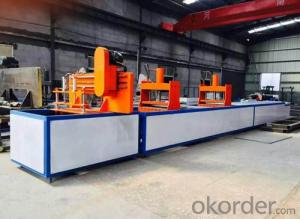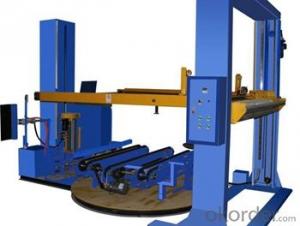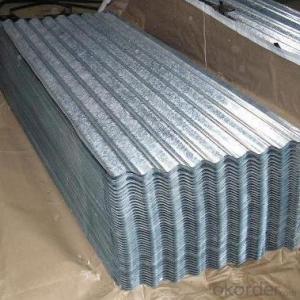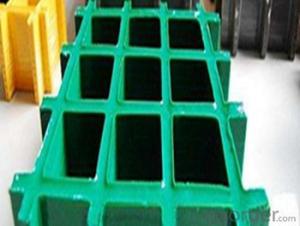FRP Pultrusion Profiles - Pultruded Gratings with Safe, Anti-Slip, and Best Quality
- Loading Port:
- Tianjin
- Payment Terms:
- TT OR LC
- Min Order Qty:
- 14 m.t.
- Supply Capability:
- 300000 m.t./month
OKorder Service Pledge
OKorder Financial Service
You Might Also Like
PRODUCT DESCRIPTION
Pultruded grating is made by a particular assembly process, which using “I” shape as its main load-bearing and special rod to go through the bearing bar. Pultruded grating include the standard grating and the custom grating, the custom grating can be designed to meet customer’s requirement or special using condition by changing the shape, size and space of the bearing bars, the surface can be covered with lozenge panel, grit panel, or added the anti-slippery sand directly.
FRP pultruded grating has the most characteristics of molded grating, but it has its distinct advantages, it has very high fiberglass content in the loading direction, so it has very high load capability, it has more superiority when used at wide span, so that the basic support will be decreased and the project cost will be reduced accordingly.
SPECIFICATION
The standard space between two crossbars is 6 inch or 12 inch.
Thickness (mm) | Bar width (mm) | Open space (mm) | Open rate (%) | Approx weight (kg/m |
25.4 | 15.2 | 22.8 | 60 | 13.2 |
25.4 | 15.2 | 15.2 | 50 | 15.9 |
25.4 | 15.2 | 10.1 | 40 | 18.5 |
25.4 | 40 | 10.8 | 21 | 14.5 |
38.1 | 15.2 | 22.8 | 60 | 15.8 |
38.1 | 15.2 | 15.2 | 50 | 19.1 |
38.1 | 15.2 | 10.1 | 40 | 22.4 |
50.8 | 25.4 | 25.4 | 50 | 16.6 |
50.8 | 25.4 | 12.7 | 33 | 21.1 |
CHOICE FOR PULTRUDED GRATING
Resin: GP resin, ISO resin, VE resin, Phenol resin
Color choice: Yellow, gray, green, custom color
Surface choice: Groove surface, grit surface, lozenge cover surface
FEATURES
a. Anti-corrosion and anti-rust
b. Light weight and high strength
c. Anti-flammable
d. Anti- fatigue
e. Safe and anti-slippery
f. Anti-ageing
g. Easy of maintenance
h. Excellent electromagnetism property
i. Good economic benefit
FIELDS SERVED
Sewage treatment,
water supply and drainage,
chemical industry,
oil industry,
power engineering,
pulp and paper,
construction engineering,
spinning, marine engineering.
APPLICATION
Operation terrace,
stair walkway,
ground floor,
trench cover,
sidewalk,
foot bridge,
equipment safety fence,
scaffold.
COMPANT DESCRIPTION
CNBM,China National Building Materials Group is a state-owned enterprise in charge of administrative affairs in china building materials industry. Established in 1984, CNBM is a large group corporation of building materials with total assets of 25 billion RMB and a total staff of 30,000.CNBM now owns 200 subordinating firms of solely owned and joint-venture companies.
CNBM International Corporation is one subsidiary of CNBM, we focus on offering good-quality products,professional service and complete solution to our customers. Strong delivery capacity, advanced technology& management, strong financing capability and excellent after-sale service are our advantages in sharing international market.
FAQ
Q1.What's your sample policy?
A:We can supply the sample if we have ready parts in stock, but the customers have to pay the courier cost.
Q2.Can you produce according to the samples?
A: Yes, we can produce or modify the products according to your request.
Q3.How do you deliver the goods to my country?
A:We can provide international express, such as DHL, EMS, UPS, FedEx, etc. We select air freight and sea freight upon your requests. Quotations if without mentioning the shipping costs are shipping fee excluded.
Q4.How much does it cost to ship to my country?
A:When you goanna to place an order, please contact us, because different country has different freight.
Q5.How to get the catalogue?
A:please contact us and tell us what you are looking for
PICTURES
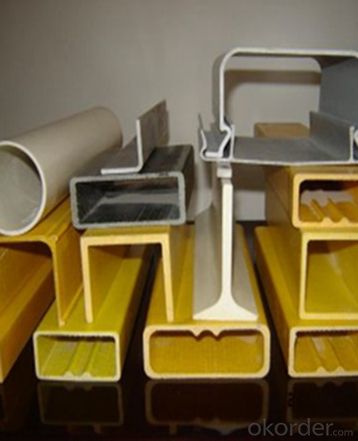
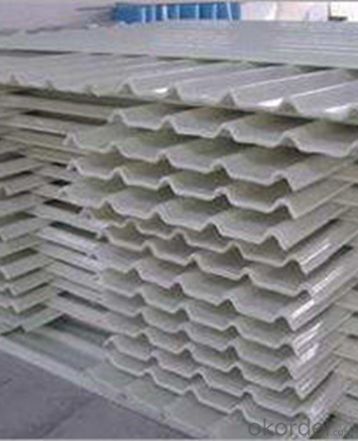
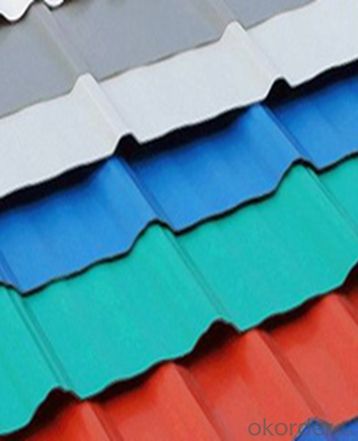
- Q: How are FRP pultrusion profiles manufactured?
- FRP pultrusion profiles undergo a highly controlled and precise manufacturing process. The process consists of several steps. To begin with, the raw materials are carefully chosen. These materials typically include reinforcing fibers like fiberglass, carbon fiber, or aramid, as well as a thermosetting resin matrix. The selection is based on the desired mechanical properties of the final product. Following that, the resin matrix thoroughly saturates and coats the reinforcing fibers. This can be achieved by immersing the fibers in a resin bath or using a resin injection system. Once the fibers are fully impregnated, they are pulled through a heated steel die. The die not only shapes the pultrusion profile but also activates the resin's curing process. This allows the resin to harden and bond the fibers together. While passing through the die, the fibers are continuously pulled by a set of rollers or a gripper system. This pulling force ensures that the profile maintains its shape and dimensions, resulting in a consistent and uniform product. After leaving the die, the profile enters a cooling zone where it is rapidly cooled using air or water. This rapid cooling helps solidify the resin and stabilize the profile's shape. Finally, the cured and cooled profile is cut to the desired length, often using automated cutting systems. Additional finishing processes, such as surface treatment, sanding, or painting, may be implemented to meet specific requirements or enhance the profile's aesthetics. In conclusion, the manufacturing process for FRP pultrusion profiles combines the impregnation of reinforcing fibers with resin, the shaping of the profile through a heated die, and the curing and cooling steps. This process enables the production of lightweight, corrosion-resistant profiles with high strength. These profiles find applications in various industries, including construction, aerospace, automotive, and electrical.
- Q: Can FRP pultrusion profiles be used in the construction of recreational vehicles (RVs)?
- Yes, FRP pultrusion profiles can be used in the construction of recreational vehicles (RVs). These profiles offer several advantages such as high strength-to-weight ratio, resistance to corrosion and rot, and excellent thermal insulation properties. Additionally, FRP pultrusion profiles can be easily molded into complex shapes, making them suitable for various applications within the construction of RVs, including structural components, flooring, walls, and roofs.
- Q: Can FRP pultrusion profiles be used in the construction of water treatment plants?
- Yes, FRP (Fiber Reinforced Polymer) pultrusion profiles can be used in the construction of water treatment plants. FRP pultrusion profiles offer several advantages such as high strength-to-weight ratio, corrosion resistance, and durability, making them well-suited for water treatment plant applications. These profiles can be used in various structural components like beams, columns, grating, and handrails, providing a cost-effective and long-lasting solution for the construction of water treatment plants.
- Q: Can FRP pultrusion profiles be used in the construction of pedestrian tunnels?
- Yes, FRP (Fiber Reinforced Polymer) pultrusion profiles can be used in the construction of pedestrian tunnels. FRP is a lightweight and high-strength material that offers numerous advantages over traditional construction materials like steel or concrete. One of the main advantages of using FRP pultrusion profiles in the construction of pedestrian tunnels is their corrosion resistance. Unlike steel, FRP does not corrode when exposed to moisture or harsh environmental conditions. This makes FRP profiles ideal for underground structures such as pedestrian tunnels where water seepage or high humidity can be a concern. Additionally, FRP pultrusion profiles have excellent mechanical properties, including high tensile strength and stiffness. This allows them to withstand heavy loads and provide structural integrity to the tunnel. The lightweight nature of FRP also makes it easier to handle and install, reducing the construction time and costs. Furthermore, FRP profiles can be easily molded into various shapes and sizes, making them highly versatile for designing pedestrian tunnels. They can be customized to meet specific project requirements, such as the curvature or dimensions of the tunnel. This flexibility in design allows for creative and efficient solutions in tunnel construction. In terms of safety, FRP pultrusion profiles have a high fire resistance and are non-conductive, which is crucial in ensuring the safety of pedestrians in tunnels. They also have a low thermal conductivity, providing insulation properties that can help maintain a comfortable environment inside the tunnel. Overall, the use of FRP pultrusion profiles in the construction of pedestrian tunnels offers numerous benefits, including corrosion resistance, high strength, versatility in design, and improved safety. These advantages make FRP an excellent choice for constructing durable and efficient pedestrian tunnels.
- Q: Can FRP pultrusion profiles be used in high-voltage applications?
- FRP pultrusion profiles are suitable for use in high-voltage applications due to their highly durable and electrically insulating nature. The material's consistency and uniform composition achieved through the pultrusion process ensure excellent electrical insulation properties. These profiles possess a high dielectric strength, enabling them to withstand high voltages without electrical breakdown. Additionally, they exhibit low electrical conductivity, preventing the flow of electric current. As a result, FRP profiles are ideal for applications requiring crucial electrical insulation, such as high-voltage power transmission and distribution systems, electrical substations, and equipment insulation. Aside from their electrical insulation capabilities, FRP pultrusion profiles offer numerous advantages in high-voltage applications. They are lightweight, corrosion resistant, and have a high strength-to-weight ratio, facilitating easy handling, installation, and maintenance. Furthermore, FRP profiles are non-magnetic and non-conductive, minimizing the risk of electromagnetic interference (EMI) in sensitive electrical systems. In conclusion, FRP pultrusion profiles are a dependable and efficient choice for high-voltage applications, providing exceptional electrical insulation, durability, and performance in challenging environments.
- Q: Are FRP pultrusion profiles suitable for the manufacturing of antenna masts?
- Yes, FRP pultrusion profiles are suitable for the manufacturing of antenna masts. FRP pultrusion profiles offer several advantages such as high strength-to-weight ratio, corrosion resistance, and excellent electrical insulation properties. These characteristics make them ideal for antenna mast construction, as they can withstand various environmental conditions and provide reliable support for antennas.
- Q: Are FRP pultrusion profiles resistant to oil and grease?
- FRP (Fiber Reinforced Plastic) pultrusion profiles are generally known for their excellent resistance to oil and grease. The combination of fibers, typically glass or carbon, with a polymer resin matrix results in a material that is inherently resistant to many chemicals, including oil and grease. This resistance is attributed to the non-reactive nature of the polymer resin, which prevents the oil or grease from penetrating the material and causing damage. Additionally, the pultrusion manufacturing process used to produce FRP profiles further enhances their resistance to oil and grease. During the pultrusion process, the fibers are impregnated with the resin and then pulled through a heated die, where the resin is cured. This creates a strong, uniform material with a dense surface that is less porous and more resistant to chemical penetration. It is important to note that the specific resistance of FRP pultrusion profiles to oil and grease can vary depending on the type of resin used and the specific application conditions. In some cases, specialized resin formulations can be used to further enhance the oil and grease resistance of FRP profiles, ensuring suitability for even more demanding environments. Overall, FRP pultrusion profiles are generally considered to be highly resistant to oil and grease, making them an excellent choice for applications where exposure to these substances is expected. However, it is always recommended to consult with the manufacturer or supplier to ensure that the specific FRP profile being used is appropriate for the intended application and chemical exposure.
- Q: Can FRP pultrusion profiles be used in the telecommunications industry?
- Yes, FRP pultrusion profiles can be used in the telecommunications industry. They offer numerous advantages such as high strength-to-weight ratio, corrosion resistance, electrical insulation properties, and design flexibility. These profiles can be used for applications such as antenna radomes, cable trays, equipment enclosures, and support structures.
- Q: Are FRP pultrusion profiles resistant to chemical spills or leaks?
- Yes, FRP (Fiber Reinforced Polymer) pultrusion profiles are highly resistant to chemical spills or leaks. The combination of the fiberglass reinforcement and the polymer matrix used in FRP pultrusion provides excellent resistance to a wide range of chemicals, acids, and corrosive substances. This makes FRP pultrusion profiles a suitable choice for applications where chemical resistance is crucial, such as in chemical processing plants, wastewater treatment facilities, and storage tanks.
- Q: Can FRP pultrusion profiles be used in the construction of swimming pool enclosures?
- Yes, FRP (Fiber Reinforced Polymer) pultrusion profiles can be used in the construction of swimming pool enclosures. FRP pultrusion profiles are known for their high strength-to-weight ratio, corrosion resistance, and durability, making them suitable for outdoor applications like swimming pool enclosures. They are lightweight, easy to install, and have excellent resistance to water, chemicals, and UV radiation, making them an ideal choice for constructing enclosures that can withstand the harsh pool environment. Additionally, FRP pultrusion profiles offer design flexibility, allowing for the creation of various shapes and sizes to meet specific enclosure requirements.
Send your message to us
FRP Pultrusion Profiles - Pultruded Gratings with Safe, Anti-Slip, and Best Quality
- Loading Port:
- Tianjin
- Payment Terms:
- TT OR LC
- Min Order Qty:
- 14 m.t.
- Supply Capability:
- 300000 m.t./month
OKorder Service Pledge
OKorder Financial Service
Similar products
Hot products
Hot Searches
Related keywords
